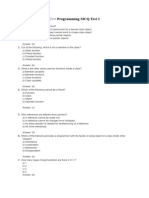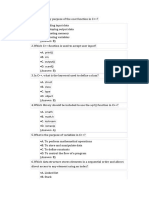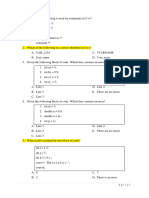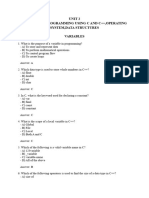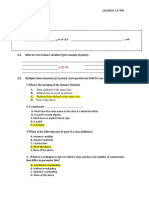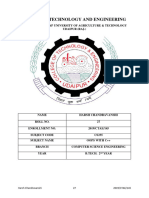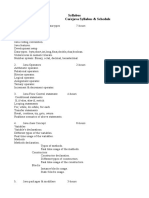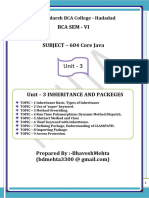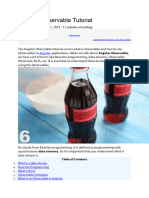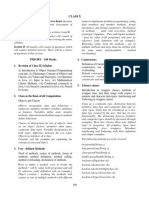0% found this document useful (0 votes)
66 views4 pagesStructured Programming Exam New
The document is an exam paper for a Structured Programming course (CS101) containing 40 multiple-choice questions focused on C++ programming concepts. Topics include functions, loops, arrays, memory allocation, pointers, constructors, destructors, and object-oriented programming principles. The exam is designed to assess students' understanding of fundamental programming concepts within a 60-minute timeframe for a total of 40 marks.
Uploaded by
masrymo271Copyright
© © All Rights Reserved
We take content rights seriously. If you suspect this is your content, claim it here.
Available Formats
Download as PDF, TXT or read online on Scribd
0% found this document useful (0 votes)
66 views4 pagesStructured Programming Exam New
The document is an exam paper for a Structured Programming course (CS101) containing 40 multiple-choice questions focused on C++ programming concepts. Topics include functions, loops, arrays, memory allocation, pointers, constructors, destructors, and object-oriented programming principles. The exam is designed to assess students' understanding of fundamental programming concepts within a 60-minute timeframe for a total of 40 marks.
Uploaded by
masrymo271Copyright
© © All Rights Reserved
We take content rights seriously. If you suspect this is your content, claim it here.
Available Formats
Download as PDF, TXT or read online on Scribd
/ 4






















